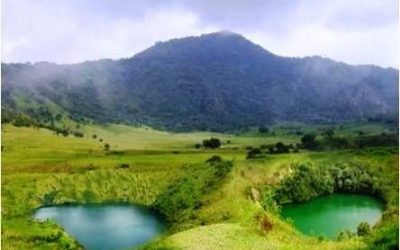
*By Payong Marquise
In each of the training centers, farmers belonging to different farming groups were assembled to witness demonstrations of compost making to enable them do same in their respective farms.
Composting is a natural process that transforms waste into a rich soil additive. Composting can also be nature’s process of recycling decomposed organic materials into a rich soil known as compost.
By composting organic waste, nutrients are put back into the soil in order for the cycle of life to continue. It was therefore, important to train farmers on composting given that their soils are losing nutrients day in day out due to poor agricultural practices.
Apart from nutrients lost, other reasons of composting include; using kitchen waste for composting to help divert the 30% stream waste from landfills, waterways and water treatment facilities. It also reduces pests and the use of pesticides. Healthy plants from healthy soil look better, produce better and have much greater ability to fight off pests and diseases.
Compost amends both sandy and clay soils. Composting saves money and farmers avoid the cost of buying soil conditioners, bagged manure, etc.
Feeding plants well with compost improves our own diets, hence home composting is a valuable tool in educating children about nature and the cycle of life.
Compost, as Trees Cameroon demonstrated to the farmers, consists of any organic material that has not been treated with pesticide or herbicide. These materials are; grass, kitchen waste, garden trimmings and pruning, animal dung, corn cobs and stalks, wood ash, leaves, sawdust, etc.
To develop a compost heap, a pile or a bin of 80cm high is built. The base is started with layers of leaves, corn cobs and stalks. Kitchen scraps, animal dung and grasses are added as the next layer. The pile is then watered until it is damp. The layers are repeated until it gets to 80cm or 1m high.
After the demonstration, the farmers were advised to turn the pile after every two weeks for it to be well mixed; to cover the heap with tarp after establishing. When the pile resembles soil, it is ready to use as compost.
How much compost the soil needs will depend on the quality of the soil. The more you add, the better your soil will become. Since you need to amend your soil annually, compost is never enough; meaning a farmer needs to have about three piles of compost.
* Trees Cameroon Coordinator for West Region



